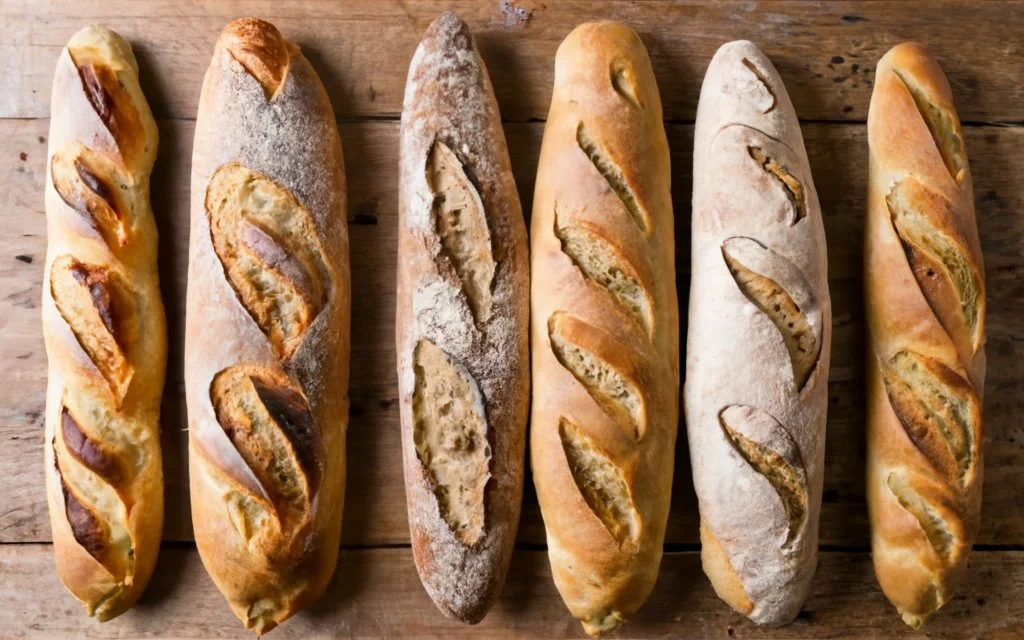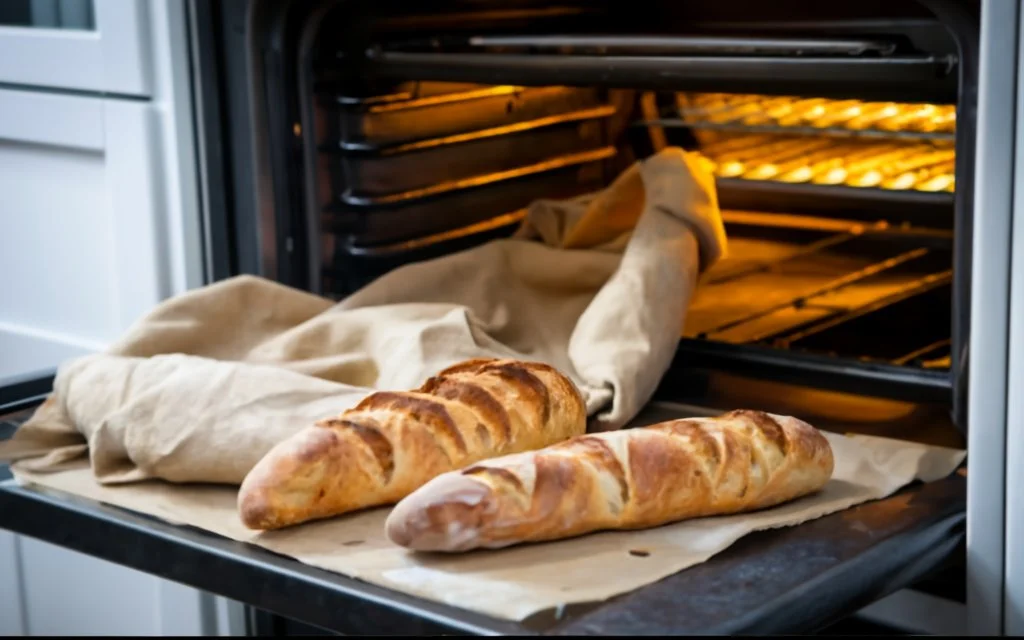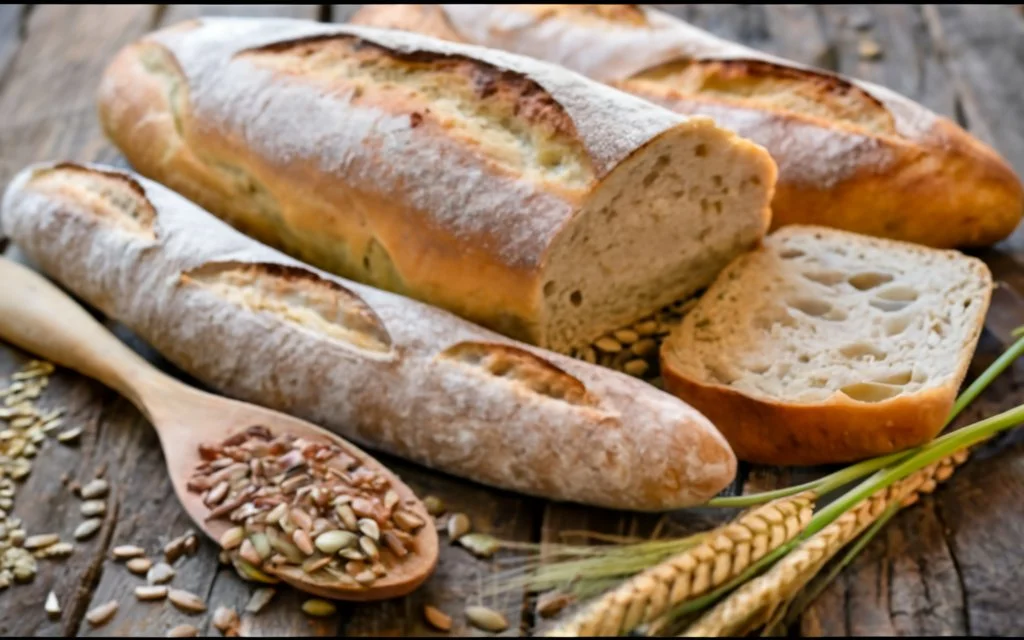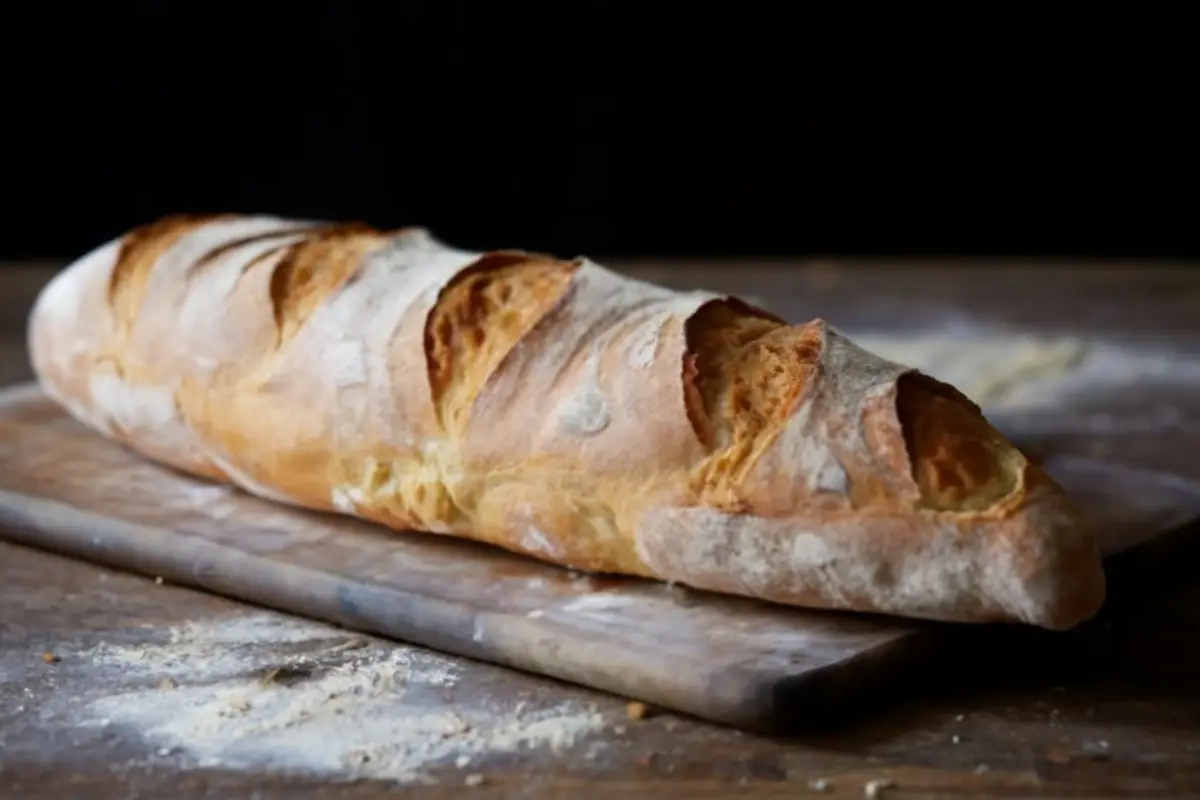Introduction to Baguettes

The Origin of Baguettes
Picture this: the streets of Paris in the early 20th century, bustling with the aroma of freshly baked bread. The baguette, with its roots deeply embedded in French history, is believed to have originated during this time. But, why the long shape? Rumor has it, it was designed for easier transport and baking. However, the true origin is shrouded in mystery, adding to its allure. This isn’t just a bread; it’s a piece of history that has traveled through time to grace our tables. For a deeper dive into the history and fun facts about the Parisian baguette, check out this worldinparis.com/parisian-baguette
Why Baguettes are Unique
What sets the baguette apart from its bread brethren? Is it the crispy, golden crust that sings under the pressure of a gentle squeeze, or the soft, airy interior that seems to dance with every bite? Perhaps it’s the versatility – a perfect companion for cheese, a humble abode for a sandwich, or simply enjoyed with a dab of butter. The bagutte isn’t just unique; it’s a culinary chameleon, adapting to every meal and occasion. Its simplicity is its strength, and its flavor, a testament to the art of baking.
In the next part, we’ll roll up our sleeves and dive into the art of making baguettes. From selecting the right ingredients to mastering the perfect crust, we’re on a quest to uncover the secrets behind these beloved loaves. Stay tuned!
The Art of Making Baguettes
Ingredients and Tools
Embarking on the journey of making a baguette, you’ll need just a few basic yet crucial ingredients: high-quality flour, water, yeast, and a pinch of salt. The simplicity of these ingredients belies the magic they create when combined. As for tools, a baking stone or a bagutte pan is essential for achieving that perfect crust, and a sharp knife or lame is necessary for scoring the dough. This isn’t merely mixing and baking; it’s an art form, where precision meets passion.
Step-by-Step Baking Process
Firstly, mix your ingredients and knead the dough until it’s smooth and elastic. This is where you infuse your love into the baguette. Then, let the dough rise. Patience is key here – a slow rise enhances the flavor. After the first rise, shape your loaves. This isn’t just shaping; it’s sculpting the future crusty goodness. Now, let them rise again until they’re puffy and ready for the oven. Before baking, score the loaves. This isn’t just for looks; it helps the baguett expand in the oven. Finally, bake until golden brown. The aroma filling your kitchen? That’s the smell of success.
Tips for the Perfect Crust
For that perfect, crispy crust, steam is your friend. Add a pan of water to the oven to create steam. Also, don’t be shy with the oven temperature. A hot oven is crucial. But remember, every oven is different, so keep an eye on your baguette. Lastly, let it cool on a wire rack. This isn’t just cooling; it’s allowing the crust to develop its full crispy potential.
In the next part, we’ll explore the different varieties of baguettes. From traditional to modern twists, there’s a world of flavors waiting to be discovered. And yes, we’ll even talk about gluten-free and vegan options because everyone deserves a slice of baguette heaven!
Varieties of Baguettes

Traditional vs. Modern Twists
The world of baguettes is a delightful blend of tradition and innovation. On one hand, the traditional baguette is a testament to time-honored French baking methods, characterized by its simplicity and classic flavor. Conversely, modern twists have emerged, bringing exciting variations to this iconic bread. From the inclusion of ingredients like olives and nuts to sweet adaptations with chocolate or dried fruits, these contemporary versions offer a new dimension to the humble baguette. Each variant not only adds diversity but also showcases the baguette’s versatility as a culinary canvas.
Gluten-Free and Vegan Options
Moreover, the world of baguettes now embraces inclusivity with gluten-free and vegan options. Utilizing alternative flours such as rice or almond, and substituting traditional yeast, these baguettes ensure that everyone can savor this beloved bread. The gluten-free and vegan baguettes maintain the essence of the traditional loaf while offering a delightful experience for those with dietary restrictions. Thus, the baguette continues to evolve, catering to a wider audience without compromising on taste and texture.
In the next part, we’ll delve into the art of pairing baguettes with food. From the best accompaniments to wine pairings, we’ll explore how to elevate your baguette experience. Stay tuned!
Pairing Baguettes with Food
Best Foods to Accompany Baguettes
When it comes to companions for a baguette, the possibilities are endless. Starting your day with a baguette slathered in butter and jam is a simple yet divine choice. For lunch, why not opt for a classic baguette sandwich? Filled with ham, cheese, and crisp lettuce, it’s a meal that satisfies on every level. As dinner rolls around, a baguette becomes the perfect partner for soups and stews, adeptly soaking up flavors and adding a satisfying crunch. Thus, the baguette proves its versatility, seamlessly fitting into any meal of the day. To complement your baguette meal, discover various ways to cook flap meat in our detailed guide here.
Wine and Baguette Pairings
Pairing wine with a baguette elevates the experience to new heights. A light, crisp white wine complements a baguette topped with soft cheese and fresh herbs, creating a harmonious blend of flavors. For those who prefer reds, a robust red wine pairs splendidly with a baguette served alongside charcuterie or rich spreads. The key here is balance; the wine should enhance, not overpower, the delicate flavors of the baguette. This pairing isn’t just about taste; it’s an exploration of textures and aromas that delight the senses.
In the next part, we’ll delve into the best ways to store and reheat baguettes. Ensuring your baguette remains as delicious as when it was first baked is an art in itself. Stay tuned!
Storing and Reheating Baguettes

Keeping Baguettes Fresh
Ensuring your baguette remains as delightful as when first baked is key. Ideally, a baguette is best enjoyed on the day of baking. However, if you need to store it, opt for a cloth or paper bag, as plastic can make the crust lose its crispiness. For longer storage, freezing is your best bet. Simply slice the baguette before freezing, and you have convenient portions for later. This method isn’t just about storage; it’s about preserving the essence of the baguette.
Reheating Techniques
Bringing a day-old baguette back to life is simpler than you might think. Lightly sprinkle the baguette with water and heat it in the oven for a few minutes. This technique revives the crust, making it almost as good as new. If you’ve frozen your baguette, toasting slices straight from the freezer works wonders. This process is more than just reheating; it’s about recapturing the baguette’s original splendor.
In the next part, we’ll dive into the fascinating role of baguettes in world cuisine. From their iconic status in French dining to their global adaptations, the baguette’s journey is a story of culinary versatility and universal appeal. Stay tuned!
Baguettes in World Cuisine
Baguettes in French Cuisine
The baguette, an emblem of French culture, is more than just a bread in France; it’s a daily ritual. Integral to French cuisine, it graces every boulangerie and dining table. In France, a meal often feels incomplete without a slice of baguette to accompany it. Whether it’s used for sopping up the last bit of sauce or enjoyed with a slice of cheese, the baguette is a staple. Moreover, it’s not just about eating; it’s about experiencing a part of French heritage with every bite.
Baguettes Around the World
Furthermore, the baguette’s allure isn’t confined to France. Globally, this beloved loaf has been embraced and adapted. From the Vietnamese bánh mì, which uses a baguette as its foundation, to Italian bruschetta featuring toasted baguette slices topped with tomatoes and basil, the versatility of this bread is astounding. It’s fascinating to witness how different cultures have made the baguette their own, infusing local flavors and ingredients, yet maintaining its essence. Explore the global influence in cuisine further with our post on Piquillo Peppers and their culinary uses here
Health and Nutrition

Nutritional Value of Baguettes
Often, the baguette is viewed through a narrow lens, primarily as a source of carbohydrates. However, when we delve deeper, it’s clear that a baguette, especially one made with whole grains, can be a nutritious part of a balanced diet. It provides essential carbohydrates for energy and, if made with whole grains, offers a good dose of fiber. Importantly, the joy of eating a fresh baguette – its satisfying crunch and soft interior – contributes to a sense of well-being. Moderation is key, of course. Including a baguette as part of a varied diet can add both pleasure and nutritional value to your meals.
Diet and Baguettes
For those mindful of their diet, the baguette still has a place. Choosing a baguette made with whole grains enhances its fiber and nutrient content. Pairing it with healthy fats like avocado or lean proteins can create a balanced, satisfying meal. The manner of consuming a baguette also matters. Savoring it slowly, enjoying each bite, can make a simple baguette a fulfilling part of your diet, both gastronomically and nutritionally.
In the next part, we’ll answer some frequently asked questions about baguettes. From their preparation to their place in a healthy diet, we’ll cover all your burning baguette queries. Stay tuned!
FAQs
- What makes a baguette different from other types of bread?
Uniquely, a baguette is known for its long, thin shape and a crust that’s distinctively crispy. Inside, it’s soft and airy, setting it apart from other breads. Its preparation, involving a specific technique of kneading and baking, also distinguishes it. Learn more about the frenchtogether.com/baguette - Can baguettes be made gluten-free?
Indeed, gluten-free baguettes are possible, using alternative flours like rice or almond flour. This ensures that even those with gluten sensitivities can enjoy the unique taste and texture of a baguette. - What are some creative ways to use leftover baguettes?
Leftover baguettes can be transformed into croutons, bread pudding, or even French toast. These ideas give a delicious second life to your baguette. - How do French bakeries achieve the perfect baguette crust?
The secret lies in the baking technique. A combination of high oven temperature and steam during the initial baking phase is crucial. This method ensures the baguette gets its signature crispy crust. - Are baguettes suitable for a healthy diet?
Yes, when enjoyed in moderation. Baguettes, especially those made with whole grains, can be part of a healthy diet. Pairing them with nutritious toppings or sides enhances their nutritional value.
Conclusion
Throughout this exploration of baguettes, we’ve delved into their rich history, diverse varieties, and the art of keeping them fresh. The humble baguette, with its simple ingredients, has proven to be a versatile and beloved staple in cuisines worldwide. More than just a type of bread, the baguette is a testament to culinary tradition and creativity. Whether savored fresh from the oven, accompanying a favorite dish, or as part of a balanced diet, the baguett holds a cherished place in culinary culture. So, the next time you enjoy a piece of this crispy, fluffy bread, remember, you’re not just tasting a baguett; you’re experiencing a slice of culinary heritage. For more culinary explorations and delicious recipes, visit our homepage

